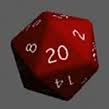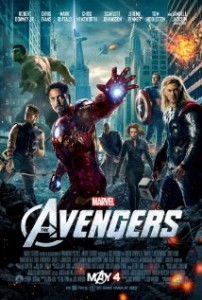Ah, the bane of writers everywhere—the joys of “setting the scene”. For the longest time, I admit, I had only the vaguest, unformed idea what that meant. I mean, I knew it was describing a setting or situation in which your characters are placed, but I kind of missed the important part. It’s the describing of a setting or situation where something is about to happen. It is a description that implies conflict and tension.
That critical bit about things getting ready to happen is the hard part, and in my opinion, viewpoint is probably one of the best tools for setting the scene when telling a story. Over and above word choice and setting and dialogue and all those other things we like to harp about when talking about technique and storytelling. Why’s that? Because, in my opinion, all those things come from your point of view.
It may be obvious, but point of view is one of the very first decisions on how to tell a story, so, for completeness sake, lets run down the differences real quick. We’ll keep to 1st and 3rd here as 2nd person is so little and specialized in use that it deserves it’s own post (which you’ll get from Tracy Hickman, so stick around for that!).
With 3rd person, we have the external narrator with varying levels of distance, from omniscient (furthest) to limited (closest) viewpoints. With omniscient, you get the “god” perspective. Objective is through an impartial observer, and limited traps us in the head of one character at a time.
With 1st person, we have an extremely close narration that allows the reader to take on the experiences and personality of the narrator. The constant use of “I” reinforces this aspect, which makes empathy with the narrator an almost given.
Each has its uses and can be very effective in particular genres and situations.
To be honest, most of us will be doing 3rd person limited or 1st person these days. While omniscient viewpoint works for milieu tales, like Lord of the Rings or Dune where the setting and culture take precedence, it’s gone out of favor over the last few decades. Objective can work, too, but my favorites are when you’re in it with the person your supposed to sympathize with rather than hearing about it from someone else.
The real issue is: the further from the character’s personal viewpoint you get, the less the reader tends to care about them. If your story is about a the setting, like with Dune, distance works. Not so much for a character piece.
So, let’s take our prompt—two aliens walking into a bar.
With a 1st person narrative, obviously, we have to pick a character. For simplicity’s sake, lets pick the human guy sitting alone in the corner who sees our aliens come in together. Say, our human is a drifter with a snarky personality, who’s had dealings with this particular species and tells us right off, they don’t get along. Instant tension. Our drifter gets uncomfortable, keeps his eyes on the newcomers, pushes his glass away and asks for the bill right quick. All the while, we’re getting the narrator’s snarky version of what’s going on. The scene is being set just by having the narrator get antsy in his own personal way. With 1st person, personality is key, and we’ve only got our narrator to tell us how to interpret what’s happening.
Third person gives us a little more leeway. What if the first alien, Bob, is from a culture where public inebriation only happens when someone dies, and there’s a birthday party going on. When he gets into the bar, he starts thinking about the funerals he’s been to. Suddenly, you’ve got tension with what’s actually happening around him and the somber mood he’s now in. Bob gives us information about his people and their ways by how he handles the situation. Maybe he’s upset that he’s mood got soured by the joviality. Maybe he finds humans obscene for using alcohol to celebrate a life rather than a death. Maybe Bob picks our drifter in the corner because of his uncomfortableness, thinking this lone human might agree with him.
Depending on the distance with 3rd person, we could get as particular in limited perspective as with 1st person—Bob’s been dying for a certain beverage, but it’s too sweet for the somber mood he’s now in—or more generalized with Bob’s recount of how his friend accidentally picked a fight with the drifter, if you want go more of an objective viewpoint. Both of these, of course, keep us in Bob’s head, so we open the scene up a bit to things that our drifter might have missed while we were so focused on his pithy turns of phrase. At the same time, we’re not buried under exposition as to why Bob’s people think parties are for the dead, because we’re right with Bob as he experiences things.
With 3rd person omniscient, all bets are off. We can get information from Bob, his friend, the drifter, the bartender, the birthday party-goers. We can learn the history of Bob’s people, the trouble the drifter had with them, probably even a few facts about the bar even the owner didn’t know. We’re also often supplied with what it all means and why its important. We lose much of the detailed personal impressions that our characters might have for more of an overarching view of the point of the scene.
Setting the scene isn’t easy, but picking the right viewpoint from the start, can make it a lot easier in the end. Pick carefully, my friend.




